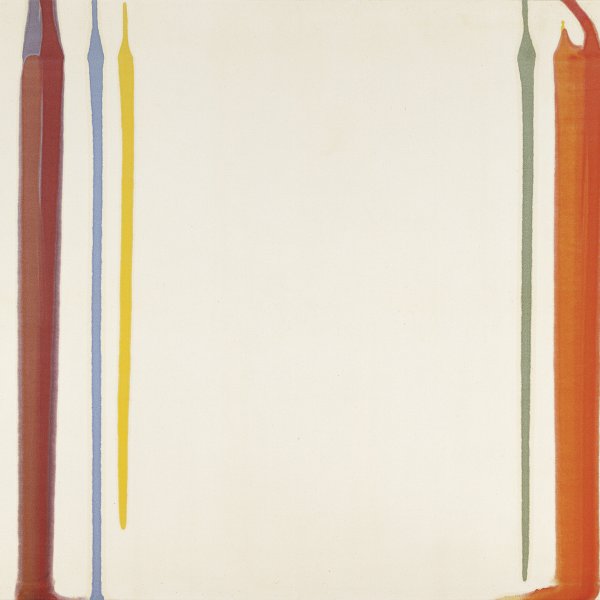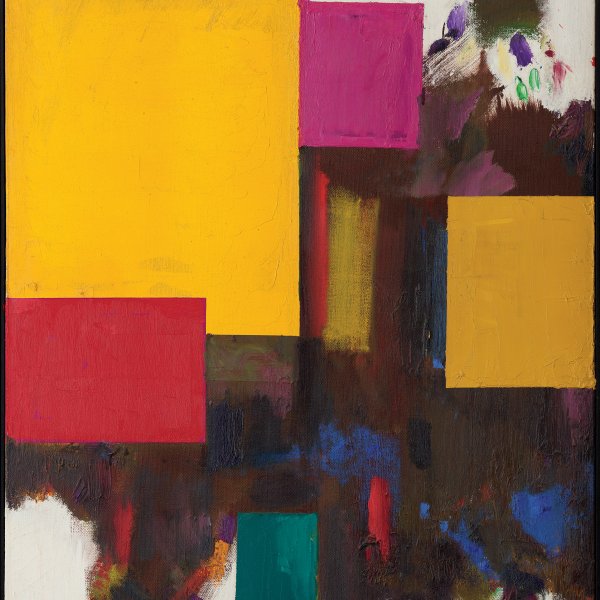Earth Rhythms
1961
Gouache on Cardboard.
67 x 49 cm
Museo Nacional Thyssen-Bornemisza, Madrid
Inv. no.
771
(1968.13
)
ROOM 46
Level 1
Permanent Collection
The American abstract painter Mark Tobey’s greatest aspiration was to convey universal themes in his works. This distances him from his contemporaries, such as Pollock and Rothko, who were more concerned with capturing their own existential anguish. Although Tobey never lost contact with his country of birth, in 1960, shortly after being awarded the International Great Prize at the Venice Biennale of 1958, Tobey moved to Basel permanently. In Europe he was acclaimed by the followers of matter painting, who espoused the ideas of the French theoretician Michel Tapié.
Earth Rhythms, executed in 1961, is a perfect example of Tobey’s delicate, linear style derived both from observation and from Surrealist automatism and Oriental mysticism, which influenced him following his trip to China and Japan in 1934. His conversion to the Baha’i faith in 1918, a syncretic religion originating from Iran which advocates values similar to Buddhism based on the unity of the whole of creation, and his learning of Oriental calligraphy, would mark him forever.
As in most of Tobey’s paintings, in the present composition he builds an all-over pictorial structure from earthy shades splashed with light touches of reds, blues and purples in a series of floating, interlaced calligraphic forms that make up his own particular spatial representation of the cosmos. The tension between surface and depth, between light and shade, between automatism and the elegance of gesture, without any special emphasis on any fragment of the picture surface, can be linked to his devotion to music, which made him aware of the importance of rhythm, as alluded to in the title of the painting. The musical aspect of his painting led John Cage to confess that Mark Tobey was one of the visual artists who had most greatly influenced him and wished to demonstrate this by dedicating 25 Mesostics Re and Not Re Mark Tobey to him in 1972.
Paloma Alarcó
Earth Rhythms, executed in 1961, is a perfect example of Tobey’s delicate, linear style derived both from observation and from Surrealist automatism and Oriental mysticism, which influenced him following his trip to China and Japan in 1934. His conversion to the Baha’i faith in 1918, a syncretic religion originating from Iran which advocates values similar to Buddhism based on the unity of the whole of creation, and his learning of Oriental calligraphy, would mark him forever.
As in most of Tobey’s paintings, in the present composition he builds an all-over pictorial structure from earthy shades splashed with light touches of reds, blues and purples in a series of floating, interlaced calligraphic forms that make up his own particular spatial representation of the cosmos. The tension between surface and depth, between light and shade, between automatism and the elegance of gesture, without any special emphasis on any fragment of the picture surface, can be linked to his devotion to music, which made him aware of the importance of rhythm, as alluded to in the title of the painting. The musical aspect of his painting led John Cage to confess that Mark Tobey was one of the visual artists who had most greatly influenced him and wished to demonstrate this by dedicating 25 Mesostics Re and Not Re Mark Tobey to him in 1972.
Paloma Alarcó










